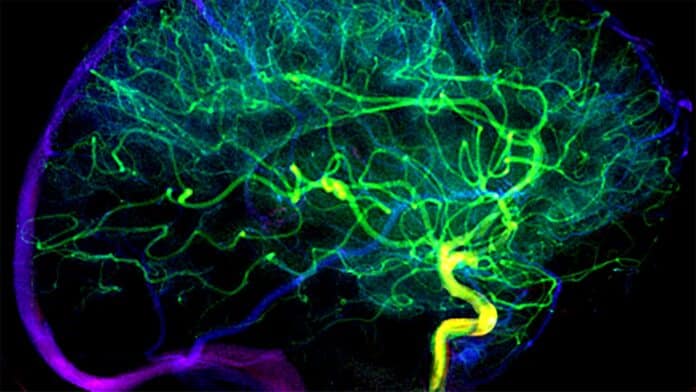Researchers at the University of Zurich studied brain blood vessels that help prevent bleeding after stroke treatment. Then, these vessels connect different parts of the brain’s blood supply as they are essential for stroke patients to recover well.
Ischemic strokes are a remarkable health problem. Strokes happen when a blood vessel in the brain gets blocked and stops blood flow. This causes brain tissue not to get enough oxygen and nutrients, leading to symptoms like paralysis, confusion, and even death.
Despite getting treatment on time, many stroke patients do not recover. So, to help them, doctors need to unclog the blocked blood vessels in the brain. This can be done using treatments like medicine or a unique tube to remove the clot. But even with this help, many patients still have not recovered.
Researchers led by Susanne Wegener from the University of Zurich and the University Hospital Zurich found that the success of stroke treatments depends on collateral networks. Collaterals are blood vessels that connect different parts of the brain’s blood supply. They act like backup routes in case of a blockage.
Wegener said, “These vascular bridges maintain cerebral autoregulation and allow for a slower, gradual reperfusion, which results in smaller infarcts.”
The research team, led by Nadine Binder and Mohamad El Amki, studied strokes in mice using advanced imaging. They found that mice with weak backup blood vessels had stiff arteries after clot removal. This quick blood flow caused brain bleeding and more deaths.
They also found the same problem in stroke patients with weak backup blood vessels. After clot removal, they had fast blood flow, which led to small brain bleeds and poor recovery.
Until now, the main focus has been on quickly removing blood clots in stroke patients without paying much attention to the problems caused by fast blood flow after treatment. This study suggests we predict which stroke patients might recover poorly based on how quickly blood flow returns after treatment.
Susanne Wegener suggests that future stroke treatments aim to improve the backup blood vessels so that the brain gets beneficial blood flow after a stroke.
The study shows the essential role of arterial connections, specifically leptomeningeal collaterals, in determining treatment outcomes following stroke. By understanding and enhancing collateral blood flow, clinicians may improve the effectiveness of stroke treatments and ultimately enhance patient recovery and quality of life.
Journal reference:
- Nadine Felicitas Binder, Mohamad El Amki et al., Leptomeningeal collaterals regulate reperfusion in ischemic stroke and rescue the brain from futile recanalization. Neuron. DOI: 10.1016/j.neuron.2024.01.031.
